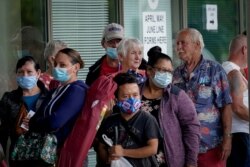The International Labor Organization reports tentative signs are emerging that the world will be on the road to recovery this year from the massive job losses brought on by the COVID-19 pandemic. However, the ILO cautions recovery will be slow, fragile and uneven.
Latest ILO projections for 2021 show most countries will experience a relatively strong recovery in the second half of the year as global vaccination programs kick in.
However, ILO Director-General Guy Ryder says this optimistic scenario assumes the pandemic is under control and that consumer and business confidence is good.
“But even in this case, we expect global working hour losses will continue throughout 2021 with a gap of 1.3 percent compared to the end of 2019 and that corresponds to 36 million full time jobs. In the Americas, Europe and Central Asia, those losses would be somewhat higher, around two percent,” he said.
While signs of recovery are encouraging, Ryder warns working-hour losses will continue throughout this year and beyond. He says financial and social distress for millions of people will not be over.
The ILO chief notes the latest analysis of the impact of COVID-19 on the world of work confirms how massively the pandemic affected labor markets in 2020.
“This has been the most severe crisis for the world of work since the Great Depression of the 1930s," he said. "When comparing with the last quarter of 2019, we now see that 8.8 percent of global working hours were lost in the course of the year. And that is the equivalent of 255 million full time jobs.”
Ryder notes this is approximately four times greater than the number of jobs lost during the 2009 global financial crisis.
The ILO reports the majority of these job losses were a result of people dropping out of the labor market because they were unable to work or because of pandemic restrictions. In many cases, it says, people just gave up and stopped looking for work.
The report says massive job losses resulted in a loss of $3.7 trillion of global labor market income or 4.4 percent of global Gross Domestic Product. It finds women and young people are those hardest hit by the pandemic’s labor market disruption.









